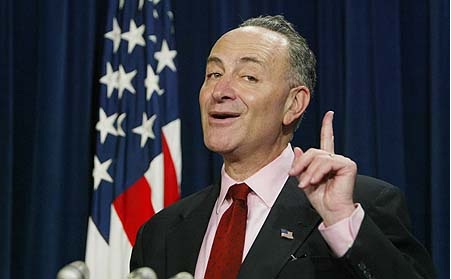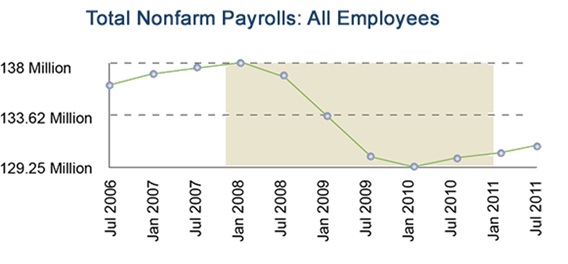Fall Toy Preview: Upbeat and Productive
As I flew toward Dallas reading the Daily Doom & Gloom, I had a sense of trepidation about what the mood at the Fall Toy Preview might be. I’m happy to say that I was pleasantly surprised as everyone was pretty upbeat (it’s slinky, it’s slinky). That’s not to say that anyone was “irrationally exuberant” but I didn’t see all the slump shouldered long faces of a year ago.
At times the traffic seemed to be a little light until I realized (doh!) that this was a “by appointment only” show and that everyone was stuffed into their little cubicles having hopefully productive meetings (It’s slinky, It’s Slinky). There weren’t supposed to be a lot of people just milling around (like me). With the exception of Tuesday morning, most companies had full dance cards and all of the major retailers were well represented. The show was “player dense” with only serious toy companies showing and only serious customers showing up. In summation the Fall Toy Preview was upbeat and productive.
As the showed ended, I snuck off to Austin for a few days of good food and good music under the guise of awaiting the September jobs report. The report was better than expected as the US economy added 103,000 new jobs raising hope that a “double-dip” recession will be avoided. The alarming jobs data from July and August were also revised upward. It seems that instead of collapsing after the summer’s debt ceiling fiasco, the job market appears to have weakened slightly and is now beginning to rebound, albeit slowly.
There are 1.4 million more people on nonfarm payrolls than there were a year ago. That sounds good but it comes to an average of just little over 100,000 per month, which is nowhere near large enough to get the economy really growing again. In addition, Toyjobs favorite labor statistic, U6 (which includes people who have given up trying to find work as well as those working part time out of necessity rather than choice) has surged to 16.5% – its highest level this year and from a low of 15.7% in March. So, things are improving but at a very slow rate.
What’s holding us back? In a word – uncertainty. We are having a slow and very fragile recovery but there are lots of icebergs around. The tricky thing about icebergs is that even if you can steer around what you can see, no one knows what’s under the surface. The press is pumping us daily doom and gloom about the European debt crisis. In reality this doesn’t affect the Main Street economy all that much. In fact, through the summer, retail sales have continued to slowly advance. It does affect the big money center banks who in their usual style – chased yield – and bought bonds from places like Greece(?) and Italy(?) in order to capture a few extra points of yield for their “safe” bond portfolios. In their Wall Street way they have done this in huge amounts with large amounts of leverage. Sound familiar? Needless to say the large European banks are up to their eyeballs in this junk. So, while this may not affect the Main Street US economy today… if it all falls apart then everything goes kerblooey!
The usually sober Senate led by the serial idiocy of Senator Charles Schumer has recently passed a currency bill aimed at China. The legislation was widely opposed by companies that do business with China. Small consumer goods companies, like toys and juvenile products, know that this sort of thing will make their manufacturing costs go up and their margins go down. Large companies selling to China (GE, Boeing, Bechtel) are afraid that even if it doesn’t start an all out trade war that: “They’re going to start f–king with us”. But the Senate was determined. Stated Schumer: “We’ll shoot ourselves in the head if we have to!” Could it be? That it’s all electioneering? That the Chinese government rarely votes in US elections? That Senators are just beating their chests because they know the bill won’t pass the often less sober John Boehner and the usually less rational House? And that nothing will really happen? No. That sort of thinking is just way too cynical.
“Now hold on. There’s plenty of Senators stupider than me.”
Uncertainty. Uncertainty has been the theme song (Joe Biden as the Skipper. Guess who plays Gilligan) of the Obama years (not that it’s all his fault). Businesses still don’t know what their taxes will look like or what their regulations will be. Just last week the Obama administration threw out part of their own probably never to be implemented health care bill (the long term care portion). Business cannot confidently make plans to invest in people or products without knowing what the playing field will look like. It is unlikely that things will noticeably improve until the next election. Of course if Michelle Bachmann is elected then all bets are off. That said, I do believe that there is reason for optimism.
Toy Industry search starts, which jumped ahead in August, have grown at an increasing rate. (IT’S SLINKY, IT’S SLINKY). Please follow our job board in the coming weeks as we expect lots of new postings (or sign up for our RSS feed to be alerted of all changes instantly). Companies seem to have realized that they need to plug some holes and add some talent, but there is a little hitch. Here at Toyjobs we are able to find our clients the people they need quickly and efficiently. That said, we have repeatedly been running into situations where companies quickly determine who it is that they want to hire, but then stall when it comes time to pull the trigger. Sometimes this goes on for months and I’ve seen it drag on for long as ten months. We have had a couple clients lose out on their chosen person because they waited while another company acted.
I’m guessing that many companies just don’t realize what goes on in a candidates head when they’re chosen but then made to wait…. They wonder. They wonder if there is some objection you have to their background that you are not telling them about. They wonder if you are “dating” other people and maybe they should just move on. They wonder if there is some financial problem at your company which constrains you from hiring them. They wonder what it would be like to work for your company if they need a quick decision in order to get something done. They wonder about all of these things and pretty soon they begin to have doubts and the romance is gone. The bloom is off the rose.
I am NOT advocating that companies rush into hiring anyone but many companies know very well that they are taking an inordinate amount of time between first interviewing a candidate and actually pulling the trigger and making them an offer. Remember that the best people are also being courted by your competitors and if they can be decisive and come across as a dynamic get it done organization, they are going to attract and return the best talent. Remember the old adage – Time Kills Hires.
Everyone knows it’s slinky
Everyone knows it’s slinky
Everyone knows it’s slinky
Tom Keoughan

